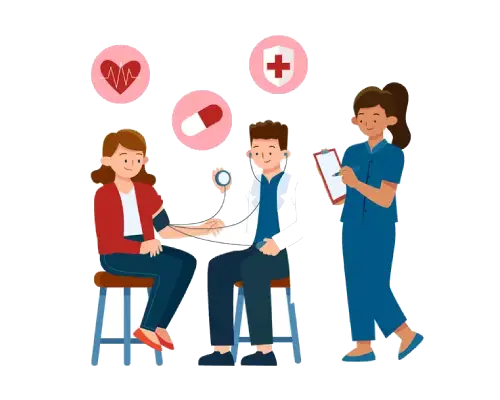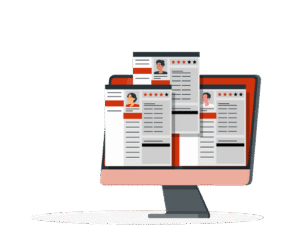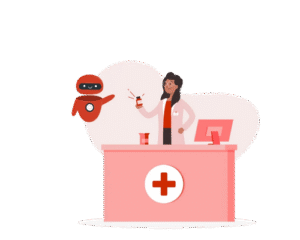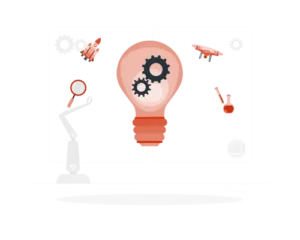Synopsis
RPA in healthcare for Government Schemes [ECHS and CGHS] is the second automation project materialized for our client, the leading healthcare service provider. The client began their automation journey with RPATech by automating their Claims Processing and continuing their digital endeavor with us by using our tailored RPA solutions for collating data for CGHS and ECHS processes.
Client’s Profile
Our client’s goal is to cater to the patient’s needs by constantly improving, standardizing, and augmenting innovative technologies to deliver an excellent patient experience. And that’s how they became the most trusted healthcare organization in the North India.
Client’s Case
Since the client is one of the largest healthcare organizations in North India, multitudes of patients come in to get treatment daily. And every patient who arrives has multiple interactions in the hospital in their single staying. The client’s process of reconciling the Government Scheme, i.e., ECHS and CGHS, was manual, which threw limitations and challenges. In our client’s case, the report accuracy and data security were a call into question.
Process Overview
The corporate office reconciles CGHS and ECHS data for the PAN India location. For the CGHS process, there were 12 hospitals for which the client extracted data from the UTIITSL website. And for the ECHS process, the number is 17 hospitals. And there are unique credentials allocated for each hospital.
The process requires the client to log into the CGHS service portal on the UTIITSL website, using 12 different IDs for 12 hospitals and 17 various hospital IDs for ECHS on the ECHS service portal. Additionally, the process requires extracting information from 6 fields from the details of the claims displayed on the dashboard. The six fields are:
- Claims ID
- Patient Name
- Claim Amount
- Date and Time
- Status
- Hospital Name
(The number of fields available varies with status.)
Client’s Challenges
The manual process of reconciling data of ECHS and CGHS was haphazard at large. CGHS and ECHS is a complicated process, demanding to log into the UTIITSL website using 29 different IDs, extracting details from 6 fields, and collating them into the SQL database. Inevitably, the process was intricate and redundant, producing no value to the employees carrying out the task daily in repetition.
The traditional method for collating data caused immense financial losses to the client, sprouted from missing bills and inaccurate reports. Longer cycle times, redundancy, and errors were a few other challenges that resulted from the manual reconciliation of ECHS and CGHS data.
Therefore, the client’s chief objective in integrating RPA in healthcare was to generate revenue and eradicate financial damages.
The Ask
The client’s prime objective in implementing RPA in healthcare is to create accurate reports, ensure patient data security, and identify missing bills. The old dysfunctional process caused heavy financial loss to the client, leading them to bring RPA into play.
Our Approach
We approached the client’s problems by first analyzing their ‘As-is’ process, identifying the scope for RPA implementation, and designing a ‘To-be’ process roadmap with the help of our domestic proprietary methodologies: D3O™ (RPA Delivery Framework), AugurD™ (RPA Identification Framework), and MotherBot® (Auto Discovery-Deployment Framework).
After hearing the client’s predicament, we proposed using the UiPath platform for designing the Bot as it enables running the Bot using UiPath Assistant without having to open Studio. Our customized RPA Bot extracted data from 6 fields for 12 different hospitals for CGHS and 17 various hospitals for ECHS, collating them into the SQL database.
Automation Outcomes
The client achieved their objectives using RPA in healthcare, and the following were the outcome:
- Financial Gain: By implementing RPA solutions, the client identified missing/unnoticed bills and cleared the claims, earning fiscal gain.
- Time saved: They saved time from the manual process handling time by fully automating the process, resulting in zero manual efforts.
- Errors reduced: RPA helped generate accurate reports by eliminating errors from the process and improving process efficiency.
- Satisfied employees: With Bots taking care of redundant yet essential tasks, employees redirected their focus on planning and strategizing, producing happy and satisfied employees.
- Wise risk management: Visibility and control over the outcomes enabled the client to plan and manage risk gainfully.




